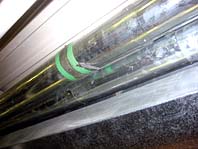
However, many factors must be taken into account in order to achieve the optimum system. The size of the house, the air tightness of the building, and the type/size of the system required to meet both the needs of the house and the wants of the customer are all issues to consider. The type of equipment to be installed (including controls), the commissioning of the system, and maintenance of the installed equipment also must be considered key factors for achieving the desired result.
Mechanical ventilation systems can range from a bathroom fan with a small, simple duct system and an on-off switch as a control up to a fully ducted heat recovery ventilation/enthalpy recovery ventilation (HRV/ERV) system with a relatively complex duct system and multiple controls. All systems require proper design, installation, and maintenance, or chances are they will not work properly.
Equipment that does not perform as anticipated means an unhappy customer because the product does not provide the results expected by the customer.
The situation could also result in structural damage or, in extreme conditions, could pose safety concerns for the people living in the house.

HRV/ERV Rundown
HRV/ERV systems are an area of ventilation installation where errors are often made by installers. To cover this topic properly, we must first understand a number of fundamental aspects of a standard HRV/ERV system.First, an HRV/ERV has two separately ducted systems (or sides of the HRV/ERV) in one package, both with a fan (even though one motor may operate both fans), a return duct, and a supply duct.
One side returns the air to be exhausted from the house through the fan and the core and then exhausts it outside. The other side returns fresh air from outside through the fan and the core and then circulates it inside the house either to the return air of the furnace or to a dedicated duct system. There is no physical connection between either of these two airstreams.
Second, there is recovery of heat in the HRV/ERV core; the airstream with the warmer air transfers heat to the airstream with the cooler air.
Third, the HRV/ERV manufacturer supplies technical data that indicates, in part, the sensible efficiency (the percentage of heat recovered across the core) and effectiveness (efficiency, plus other sources of heat introduced into the airstream) of the unit.
Fourth, there are many parts of the HRV/ERV that require periodic cleaning, including filters, the core, fan blades, and outside termination hoods.
Fifth, the mechanical ventilation system should run continuously.

A Little Off Balance
When setting up or commissioning the HRV/ERV for operation after installation, it is most important that the two sides, or airflows, are balanced.If, for example, the calculated airflow for a specific installation is 150 cfm, then both airstreams in the unit must move 150 cfm. Unfortunately, many installations never have the airflows balanced for two reasons.
Many installers do not understand the importance of balancing. In some installations, the units are actually installed with the airflows deliberately unbalanced, because the installer believes that by unbalancing the system, this will help in correcting other conditions by pressurizing or depressurizing the house.
For example, some installers believe that unbalancing an HRV/ERV by increasing the inlet cfm by an amount equal to an exhaust fan cfm will cause the house to be pressure balanced. In theory this is true. The problem is the HRV/ERV is being unbalanced on a permanent basis to deal with an appliance that is likely only running a few hours a week. This practice is incorrect for a ventilation system because HRV/ERV equipment is performance tested with the airstreams balanced.
If an installed unit is not operated under balanced conditions, it will compromise the designed efficiency of the unit and the customer will therefore have a unit that is not providing optimum performance. Also, if the unit is installed in parts of the country where below-freezing temperatures occur, ice buildup on the core could result and require more frequent defrost cycles, which creates diminished unit performance and the proper ventilation of the building will suffer.

Proper balancing of HRV/ERV systems requires accurate measuring of airflows at the time of the HRV/ERV installation and when maintenance checks are made on the equipment.
An important aspect of airflow control is dampers that are required for every HRV/ERV installation. These dampers must be installed permanently, along with flow stations.
The equipment may have dampers built into the unit. If it doesn't, these need to be added as part of the installation. If the flow stations are not an integral part of the equipment, they must be in-stalled in the airstream at the time of airflow testing.
A good manometer used to measure air pressures and the manufacturer's instructions are required to check for proper airflows. If adjustments are needed, adjust the dampers until design conditions are met on both sides, then lock the dampers in place so they cannot be moved.
Remember, these dampers and flow stations are critical to the proper operation of the unit and no installation or maintenance call is complete without checking for a properly balanced HRV/ERV.
Bowman is the president of Barry Bowman Mechanical and is an instructor of HRAI SkillTech Academy's Residential Mechanical Ventilation Installation training program. Information on SkillTech's two-day ventilation training course can be found on HRAI's Web site, www.hrai.ca.
Publication date: 05/10/2004

